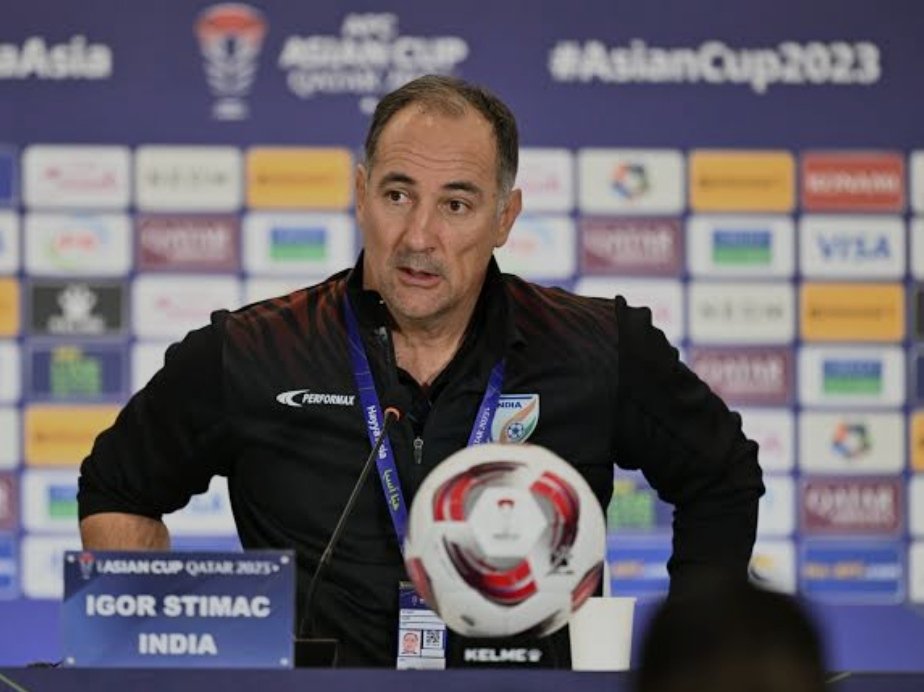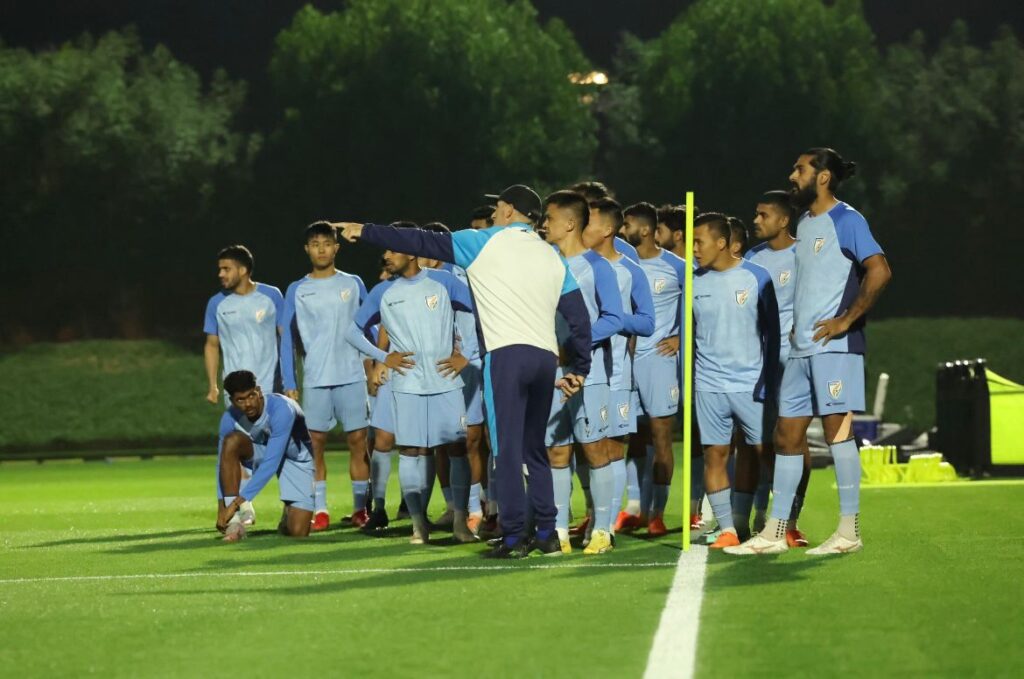
When the draw for the continent’s showpiece tournament was made last May, Igor Stimac, India’s coach, said: “We will be facing Australia, Uzbekistan and Syria in the AFC Asian Cup, and it’s going to be a tough battle for us. It’s much tougher than four years ago, but we will be there to fight every step of the way.
“If you look at the coaches of the teams we face, this should be one of the toughest groups. All very serious and experienced coaches. But what’s giving me confidence is that whoever I have met here, they say India is an organised side and looks like a team that can hurt others. That’s something we can build on.”
In the wake of India’s disastrous campaign – no points, no goals – the majority of fans have focussed their ire at the coach. As the man in charge of the project, he is viewed as the fall guy too when things go wrong. The despondency among the supporters is worse because they have witnessed some stunning results over the past month – Jordan making the final, the debutants Tajiks qualifying for the last eight, and Malaysia holding mighty South Korea to a 3-3 draw.
Stimac has been accused of various things since India exited the competition, including throwing his players under the bus and making too many excuses. But is any of what he said factually incorrect? Here, we look at some of the bones of contention between coach and disgruntled fan base.

Players not being good enough
The pre-tournament rankings may only have had Syria marginally ahead of India. But the gulf in quality was apparent just from scanning the team sheets. Syria could call on Omar Khribin, Asian Footballer of the Year in 2017, when his goals helped the side to the final round of Asian World Cup qualifying.
Uzbekistan’s first goal against India was scored by Abbosbek Fayzullaev, voted Player of the Tournament when the Uzbeks won the Asian U-20 title last year.
We won’t even talk of Australia, whose leading players are based in Germany, England and Scotland.
Stimac fact-check: True
Players of Indian Origin
Again, with Hector Cuper as coach, Syria had three players in their squad who were born in Argentina. Pablo Sabbag, who discomfited even Iran’s defence, has his roots in Colombia. Abdul Rahman Oues hails from Athens, Greece. Several players of Indian origin have recently graduated from the academies of the very best clubs – Yan Dhanda was at Liverpool, Dilan Markanday at Spurs – and some have openly expressed their wish to play in Indian colours. Of the squad that took Morocco to the World Cup semi-final in 2022, as many as 14 were born in other countries. If such ‘origin’ players help Indian football to take the next step, why should some false sense of national pride make us put obstacles in the way? Bear in mind, every country in the world does it.
For the Latest Sports News: Click Here
Stimac fact-check: True
Preparation time
From the moment the draw was made, Stimac was adamant that a four-week camp was needed to get the team into shape, both physically and tactically. Remember too that this was a full eight months before the start of the Asian Cup. All the stakeholders involved, from the AIFF to the ISL, had enough and more time to tweak the schedule – if the will was there. Yes, Japan, South Korea and Australia only gathered together less than a fortnight before the event, but since when can India afford to compare our team to the best in Asia? Uzbekistan’s players, mostly home-based, played their last league game on December 1, five weeks before their first match. Jordan, shock winners over Korea in the semi-final, adjourned their league after December 21. If India’s play lacked cohesion, you don’t have to look far for the answer.
Stimac fact-check: True
Grassroots
In his blueprint for the future, the coach has spoken of teaching young kids the right skills, and upgrading the coaching expertise available. The Uzbeks, for example, don’t have glitzy overseas signings in their league. What they do have are brilliant age-group programs that have brought through players like Fayzullaev. Check for yourselves how many of the ISL and I-League clubs have invested in proper academies, and how much they spend on them. No plant ever thrived without the roots being watered.
Stimac fact-check: True




